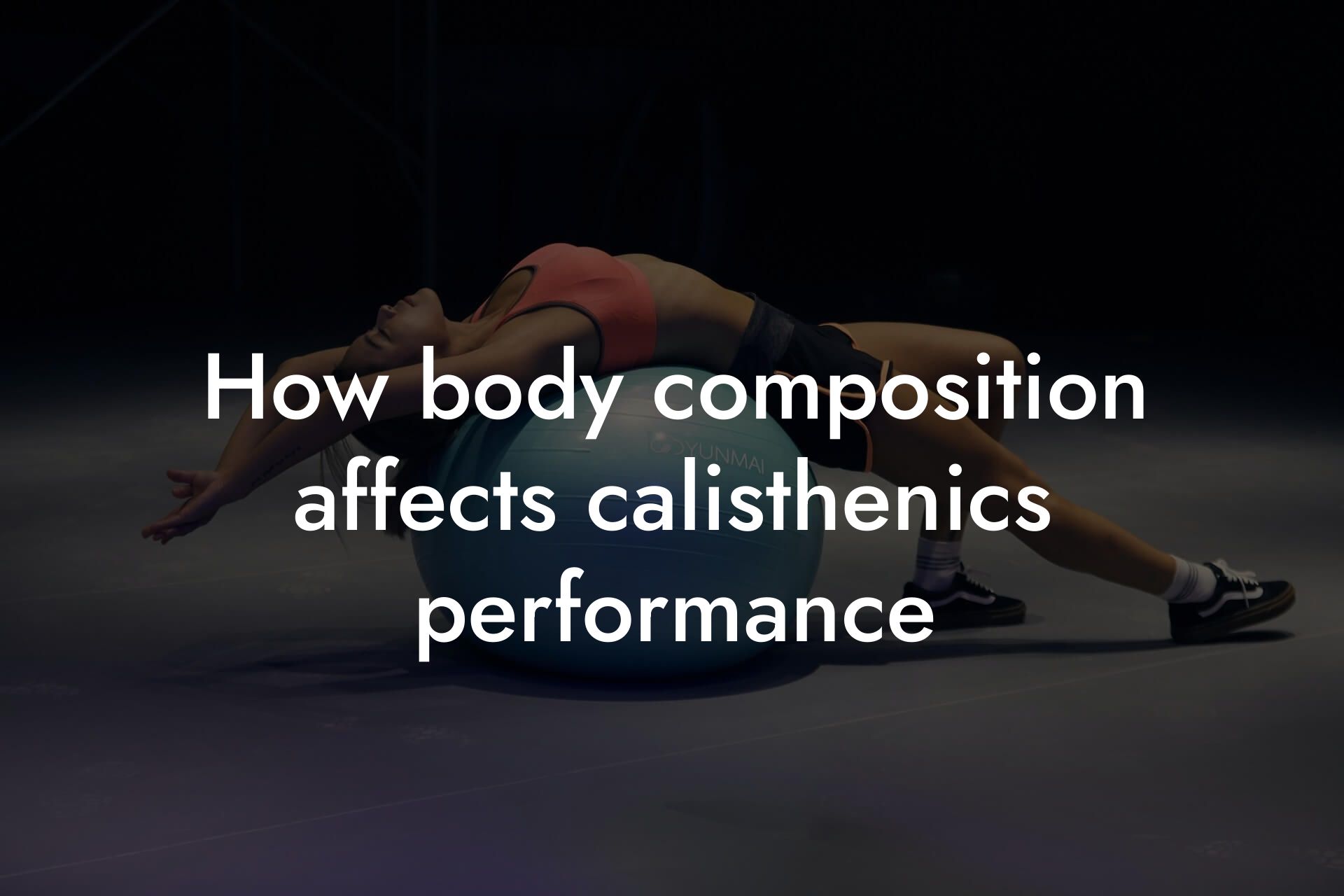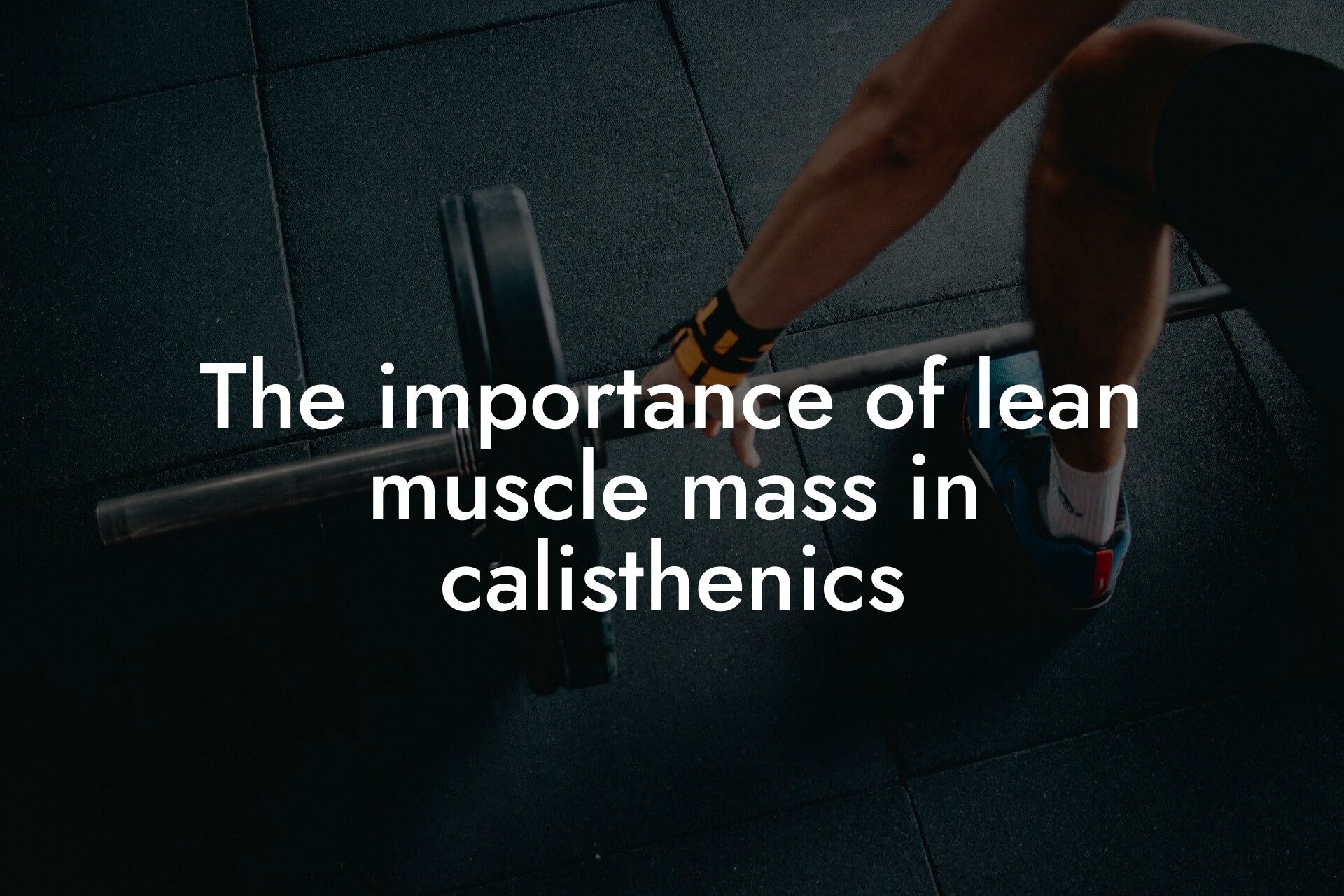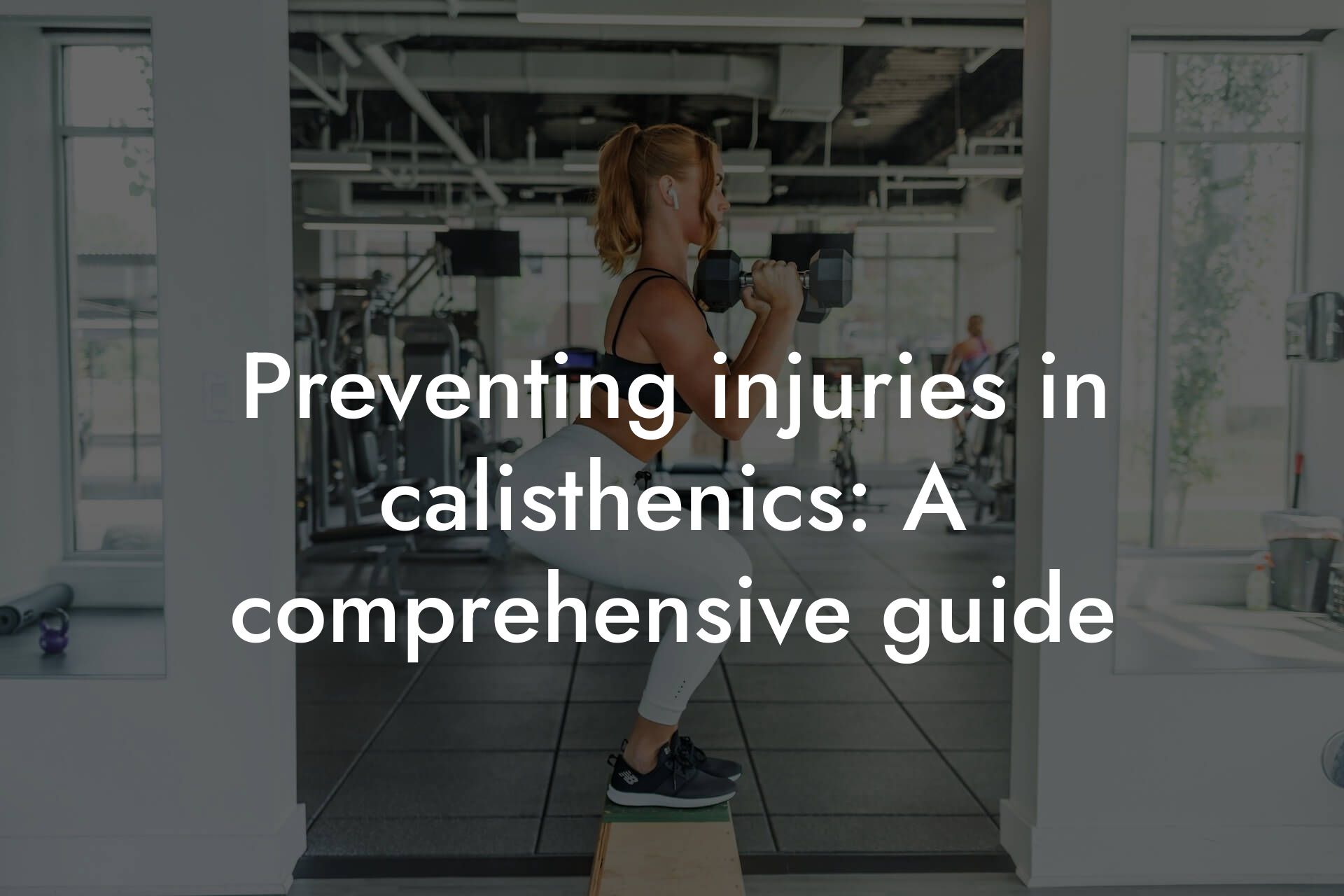As a high-earning professional, you understand the importance of maintaining a healthy and fit physique. Calisthenics, a form of exercise that uses bodyweight movements, is an excellent way to improve overall fitness and physique. However, monitoring progress can be challenging, especially when it comes to tracking changes in body composition and bone density. This is where DEXA scans come in – a powerful tool that provides a comprehensive assessment of your body's composition and density. In this article, we'll explore how DEXA scans can help you monitor your progress in calisthenics and take your fitness journey to the next level.
Table of Contents
What is a DEXA Scan?
A DEXA (Dual-Energy X-ray Absorptiometry) scan is a non-invasive medical imaging test that uses X-rays to measure bone density and body composition. The scan produces a detailed report of your body's composition, including bone density, lean mass, fat mass, and percentage of body fat. This information is essential for tracking changes in your body over time, especially when it comes to monitoring the effectiveness of your calisthenics training program.
How Does a DEXA Scan Work?
The DEXA scan process is quick and easy. You'll lie down on a comfortable table, and a scanner will pass over your body, emitting X-rays at two different energy levels. The X-rays are absorbed by your body at different rates, depending on the density of your bones and tissues. The scanner then uses this information to create a detailed report of your body composition and density. The entire process typically takes around 10-15 minutes, and you'll receive your results immediately.
Benefits of Using DEXA Scans for Calisthenics
DEXA scans offer several benefits for individuals engaged in calisthenics training. Firstly, they provide an accurate measurement of body fat percentage, which is essential for tracking changes in body composition. This information can help you adjust your diet and training program to achieve your desired physique. Secondly, DEXA scans measure bone density, which is critical for individuals who engage in high-impact activities like calisthenics. By monitoring bone density, you can identify potential issues early on and take steps to prevent injuries. Finally, DEXA scans provide a detailed breakdown of lean mass and fat mass, allowing you to track changes in muscle mass and adjust your training program accordingly.
What to Expect from a DEXA Scan Report
A DEXA scan report provides a wealth of information about your body composition and density. The report typically includes the following information:
- Bone density: This measures the density of your bones, which is essential for identifying potential issues like osteoporosis.
- Lean mass: This measures the amount of muscle mass in your body, which is critical for tracking changes in muscle size and strength.
- Fat mass: This measures the amount of fat in your body, which is essential for tracking changes in body fat percentage.
- Percentage of body fat: This measures the percentage of your body weight that is composed of fat.
- Visceral fat area: This measures the amount of fat in your abdominal cavity, which is a critical indicator of overall health.
How to Use DEXA Scan Results to Improve Your Calisthenics Training
Once you receive your DEXA scan report, you can use the information to make data-driven decisions about your calisthenics training program. For example:
- If your report shows that you have a high percentage of body fat, you may need to adjust your diet to reduce your fat intake and increase your protein consumption.
- If your report shows that you have low bone density, you may need to incorporate exercises that target your bones, such as weight-bearing exercises or resistance training.
- If your report shows that you have a low amount of lean mass, you may need to adjust your training program to include more strength-training exercises to build muscle mass.
How Often Should You Get a DEXA Scan?
The frequency of DEXA scans depends on your individual goals and needs. If you're just starting a calisthenics training program, it's recommended to get a baseline DEXA scan to establish a starting point for tracking progress. From there, you can get follow-up scans every 3-6 months to track changes in your body composition and density. This will help you adjust your training program and make data-driven decisions about your fitness journey.
DEXA scans are a powerful tool for individuals engaged in calisthenics training. By providing a comprehensive assessment of body composition and density, DEXA scans can help you track changes in your body over time and make data-driven decisions about your training program. At Tano Performance Group, we're committed to helping high-earning professionals like you achieve their fitness goals. Our state-of-the-art DEXA machine and expert team can provide you with the information you need to take your fitness journey to the next level. Contact us today to learn more about our DEXA scan services and how they can help you achieve your goals.
Frequently Asked Questions
What is a DEXA scan, and how does it work?
A DEXA (Dual-Energy X-ray Absorptiometry) scan is a non-invasive medical test that measures bone density, body composition, and fat distribution. It uses low-level X-rays to produce images of the body, which are then analyzed to provide detailed information about bone density, lean mass, and body fat percentage. The scan is quick, taking around 10-15 minutes, and is painless.
Why is it important to monitor progress in calisthenics using DEXA scans?
Monitoring progress in calisthenics is crucial to ensure you're achieving your fitness goals and making adjustments to your training program as needed. DEXA scans provide a precise and accurate way to track changes in body composition, bone density, and muscle mass, allowing you to refine your training and nutrition strategy to optimize results.
How often should I get a DEXA scan to monitor my progress in calisthenics?
The frequency of DEXA scans depends on your individual goals and training program. As a general guideline, we recommend getting a scan every 6-12 weeks to track progress and make adjustments to your training and nutrition plan. However, if you're making significant changes to your program, you may want to consider getting a scan more frequently, such as every 4-6 weeks.
What are the benefits of using DEXA scans to monitor progress in calisthenics?
DEXA scans offer several benefits, including accurate tracking of body fat percentage, lean mass, and bone density. This information allows you to make data-driven decisions about your training and nutrition, optimize your program for better results, and identify areas for improvement. Additionally, DEXA scans can help you identify potential health risks, such as osteoporosis or muscle imbalances, and take preventative measures.
How does a DEXA scan differ from other body composition measurement methods?
DEXA scans are more accurate and reliable than other body composition measurement methods, such as bioelectrical impedance analysis (BIA) or skinfold measurements. DEXA scans use X-ray technology to provide a precise measurement of bone density and body composition, whereas other methods can be influenced by factors such as hydration levels or skin temperature.
Can I use DEXA scans to track my muscle growth and development?
Yes, DEXA scans can track changes in lean mass, which is an indicator of muscle growth and development. By monitoring changes in lean mass over time, you can determine the effectiveness of your training program and make adjustments to optimize muscle growth.
How do I prepare for a DEXA scan?
To prepare for a DEXA scan, avoid eating a heavy meal or consuming caffeine for at least 2 hours prior to the scan. Wear loose, comfortable clothing and avoid wearing metal objects, such as jewelry or glasses. Additionally, inform the technician of any medical conditions or implants that may affect the scan.
What do the results of a DEXA scan mean?
The results of a DEXA scan provide detailed information about your body composition, including bone density, lean mass, and body fat percentage. The scan will also provide a breakdown of fat distribution, including visceral fat, which is an indicator of health risk. Your healthcare provider or certified trainer can help you interpret the results and develop a plan to achieve your fitness goals.
Can I use DEXA scans to monitor my bone density?
Yes, DEXA scans are commonly used to monitor bone density, particularly in individuals at risk of osteoporosis. By tracking changes in bone density over time, you can identify potential health risks and take preventative measures to maintain strong bones.
How accurate are DEXA scans?
DEXA scans are highly accurate, with a margin of error of around 1-2%. This makes them a reliable tool for tracking changes in body composition and bone density over time.
Are DEXA scans safe?
Yes, DEXA scans are safe and non-invasive. They use low-level X-rays, which are significantly lower than those used in traditional X-rays. The scan is painless and does not require any injections or medications.
Can I use DEXA scans to track my progress in weight loss?
Yes, DEXA scans can track changes in body fat percentage, which is an indicator of weight loss progress. By monitoring changes in body fat percentage over time, you can determine the effectiveness of your weight loss program and make adjustments as needed.
How do I choose a qualified technician to administer my DEXA scan?
Look for a technician who is certified in DEXA scan administration and has experience working with athletes or individuals with similar fitness goals. Additionally, ensure the facility uses a high-quality DEXA scan machine and follows proper protocols for scan administration.
What is the cost of a DEXA scan?
The cost of a DEXA scan varies depending on the location and facility. On average, the cost ranges from $50 to $200 per scan. Some insurance plans may cover the cost of a DEXA scan, so be sure to check with your provider.
Can I use DEXA scans to track my progress in athletic performance?
Yes, DEXA scans can track changes in lean mass, bone density, and body fat percentage, which are all indicators of athletic performance. By monitoring these metrics, you can optimize your training program to improve performance and reduce the risk of injury.
How do DEXA scans compare to other medical imaging tests?
DEXA scans are a non-invasive and low-radiation alternative to other medical imaging tests, such as CT or MRI scans. They provide detailed information about body composition and bone density, making them a valuable tool for tracking progress in calisthenics and overall health.
Can I use DEXA scans to identify muscle imbalances?
Yes, DEXA scans can identify muscle imbalances by tracking changes in lean mass distribution. By identifying areas of muscle imbalance, you can develop a targeted training program to improve overall muscle function and reduce the risk of injury.
How do I incorporate DEXA scan results into my training program?
Work with a certified trainer or healthcare provider to interpret your DEXA scan results and develop a personalized training program. Use the data to identify areas for improvement and make adjustments to your training and nutrition plan to optimize results.
Can I use DEXA scans to track my progress in body recomposition?
Yes, DEXA scans are an ideal tool for tracking progress in body recomposition, as they provide detailed information about changes in body fat percentage and lean mass. By monitoring these metrics, you can determine the effectiveness of your body recomposition program and make adjustments as needed.
What are the limitations of DEXA scans?
While DEXA scans are highly accurate, they do have some limitations. For example, they may not be suitable for individuals with metal implants or those who are severely obese. Additionally, DEXA scans may not provide information about muscle quality or function.
Can I use DEXA scans to track my progress in overall health and wellness?
Yes, DEXA scans provide valuable information about body composition, bone density, and fat distribution, which are all indicators of overall health and wellness. By tracking these metrics, you can identify areas for improvement and make lifestyle changes to optimize your health.
Here are some related articles you might love...
- How body composition affects calisthenics performance
- The importance of lean muscle mass in calisthenics
- Preventing injuries in calisthenics: A comprehensive guide
- Strength and conditioning programs for calisthenics practitioners
- Reducing body fat for improved strength-to-weight ratio in calisthenics
- Nutrition tips for calisthenics athletes
- Recovery strategies for calisthenics athletes
- Bone density and its role in calisthenics training
- How to build functional strength with calisthenics
Zak Faulkner
Zak Faulkner is a leading authority in the realm of physical health and body composition analysis, with over 15 years of experience helping professionals optimise their fitness and well-being. As one the experts behind Tano Performance Group, Zak has dedicated his career to providing in-depth, science-backed insights that empower clients to elevate their physical performance and overall health.
With extensive knowledge of DEXA technology, Zak specializes in delivering comprehensive body assessments that offer precise data on body fat, muscle mass, bone density, and overall physique. His expertise enables individuals to make informed decisions and achieve their fitness goals with accuracy and confidence. Zak’s approach is rooted in a deep understanding of human physiology, combined with a passion for helping clients unlock their full potential through personalised strategies.
Over the years, Zak has earned a reputation for his commitment to excellence, precision, and client-focused service. His guidance is trusted by top professionals who demand the best when it comes to their health. Whether advising on fitness programs, nutritional strategies, or long-term wellness plans, Zak Faulkner’s insights are a valuable resource for anyone serious about taking their health and fitness to the next level.
At Tano Performance Group, Zak continues to lead our Content Team revolutionising how professionals approach their physical health, offering unparalleled expertise that drives real results.




